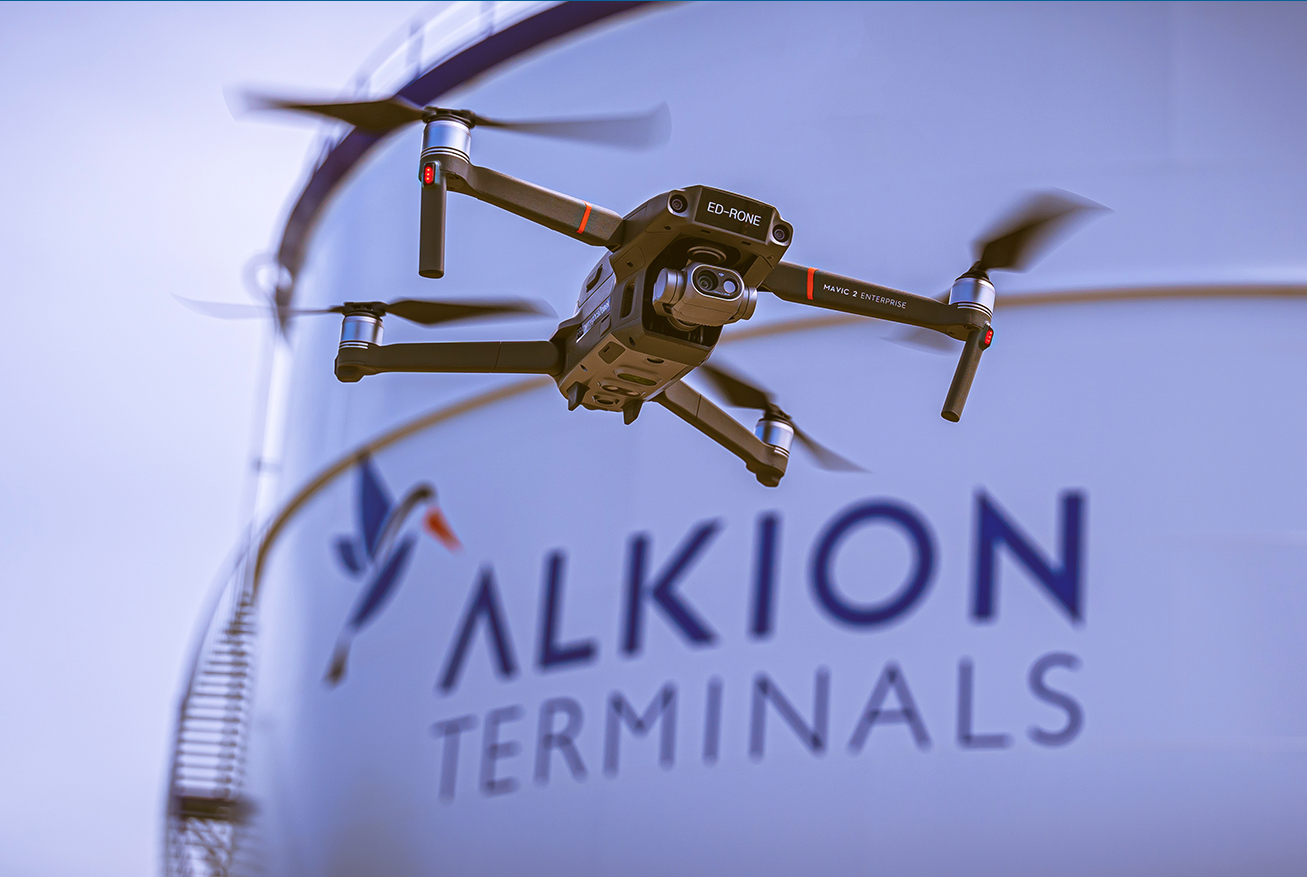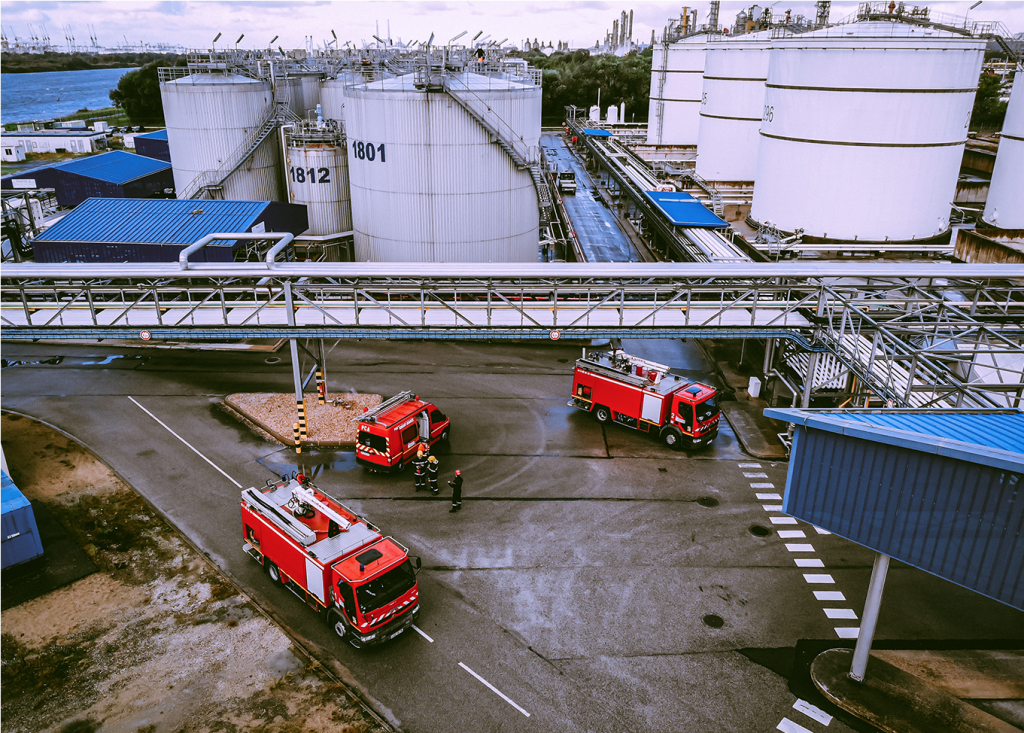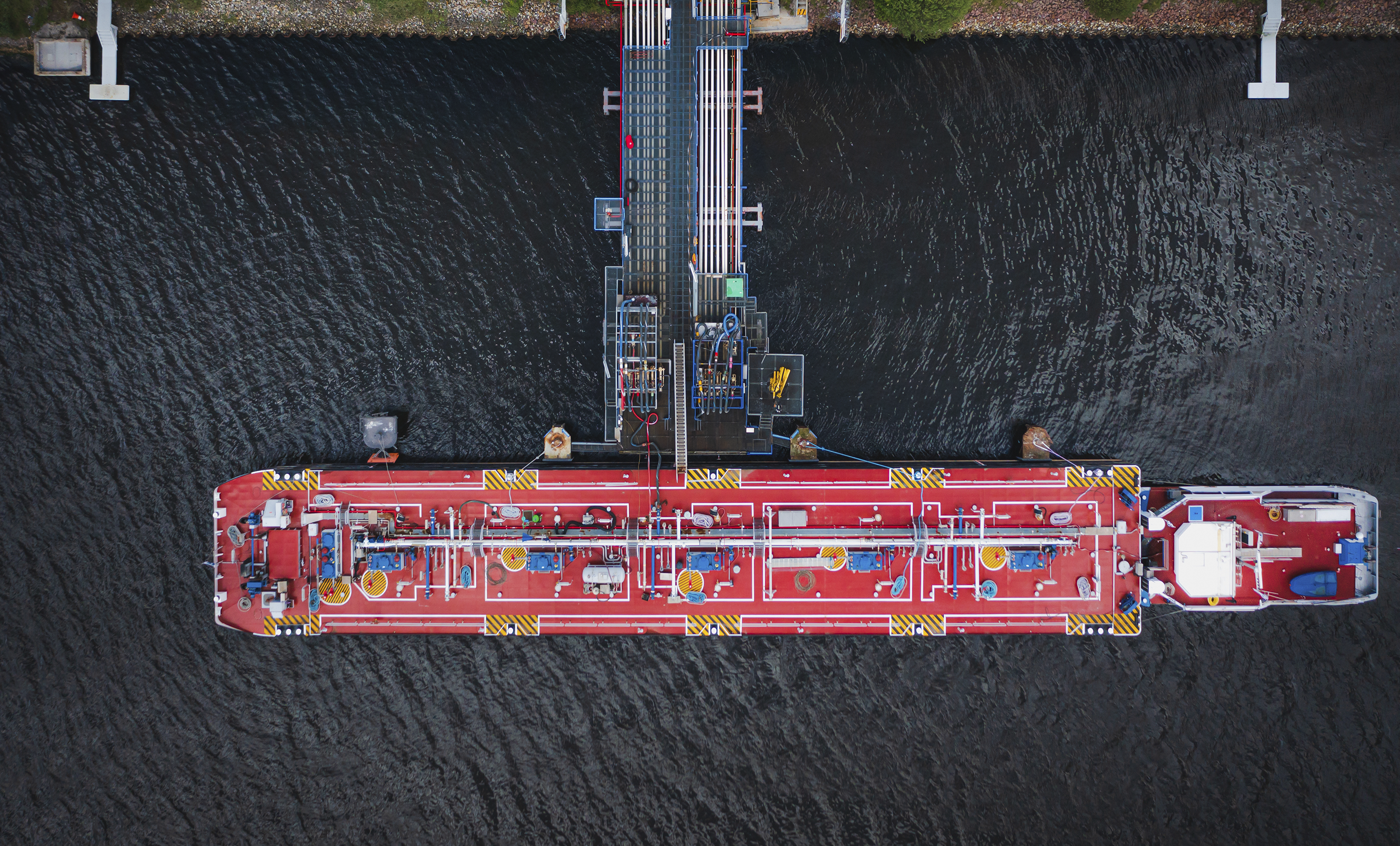Taking safety to another level with drone technology at Le Havre
The HSEQ team at Alkion Terminal Le Havre (ATLH), gained a license to operate drone for professional purposes. This delivers two safety benefits for Alkion. Firstly, drones can be of valuable help in emergency response scenarios. Secondly, drones enable easier inspection and maintenance. Thanks to Sébastien, ATLH is the first SEVESO site in the Port of Le Havre to have a certified drone pilot among its employees. Find out more about this forward-thinking initiative in this interview with Sébastien Banville.

What is involved in acquiring the permit?
“The training to become a professional drone remote pilot is split into two parts, theoretical and a practical, for a total duration of approximately 80 hours,” Sebastién explains. The theoretical part is based on the same training framework as an ULM (Ultra Léger Motorisé – motorized ultralight glider) pilot for example. “This is very complex and involves air regulations, meteorology, aircraft techniques etc. It takes 40 hours and you learn autonomously with documentation provided by the training centre. It ends with an exam at the Directorate General of Civil Aviation (DGAC), the French national regulatory authority responsible for ensuring the safety and the security of French air transport as well as providing trainings.
The one-week practical part took place at the training centre based in Le Havre and also at the ATLH site. This involved maneuvering around the installations with different type of drones and various flight scenarios. Sebastién: “As I already had some experience my instructor was able to discuss topics related to future drone use in real depth.”


Picture taken by Sébastien with the use of drone
How will it help to improve safety at ATLH?
The first major advantage of the drone on a sensitive site like ours is to carry out aerial reconnaissance during emergency management. Sebastién: “Drones are quickly activated and they eliminate the need to send personnel wearing respiratory protection equipment to deal with a significant chemical and/or thermal risk. In addition, the aerial view provides a visual of the place of intervention that is far superior to the terrestrial view.”
Second, regarding the surveillance and inspection of our facilities, the drone allows easy access to difficult-to-reach locations. “Normally, these locations would only be reachable using methods that involve time and complex technical equipment. It is now possible to use the drone to avoid or minimize these constraints. Indeed, by accessing installations and equipment with just a few rotations of the propellers, a drone can eliminate all the technical difficulties that come with the installation of scaffolding, the use of rope access technicians and other circumstances requiring physical access by employees.
Recently, the drone was able to collect vertical shots of all the tank roofs so that we could observe and assess their states. This mission was requested by the site inspection service and carried out in just one day.”
What are the rules you have to follow to use the drone at ATLH and what precautions do you need to undertake?
ATLH is located in an area with a high concentration of SEVESO sites where drone flights are prohibited without authorization,” Sebastién explains. “The use of a drone for a scheduled mission must therefore be granted at least five days in advance by the area manager, which is Haropa Port, as well by the National Air Operations Center (CNOA) based in Lyon. For emergency management, which is unpredictable, a simple telephone agreement with these authorities allows the immediate flight of the drone.”
Do any other companies in the Port have their own ‘internal’ drone operator or you are the only one?
“Alkion is the only SEVESO company in the port of Le Havre to have a drone and its own drone pilot.”
Which model of drone do you fly?
“At the Alkion site I use a DJI MAVIC 2 ENTERPRISE DUAL. It is equipped with a full HD camera as well as a thermal and infrared sensor. It also has a powerful loudspeaker to transmit audio messages remotely and an auxiliary light and a double projector for better visibility in low light conditions. It can fly for approximately one hour and 30 minutes at a time, powered by three batteries.”
Using a drone to improve safety is a significant step forward for Alkion. It also an example of the way in which we encourage employees to improve and diversify their skills. Some of the images you see on this site and other Alkion communication materials were captured by Sébastien and his drone.

Picture taken by Sébastien with the use of drone

